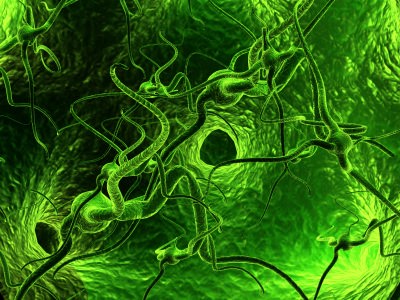
|
Neurological diseases like Alzheimer's, Parkinson's and epilepsy are increasingly common among people of all ages. Yet researchers and engineers around the world are working hard on new brain technology that could ease and possibly even cure these five neurological diseases. |
|
1. Seizures
Epilepsy is a common and very serious disease that has recently been treated using electrode brain stimulation. An electrode is an electrical conductor that is able to emit or control electrons and their movements and that is able to detect and stop an oncoming seizure with a jolt of electricity. Indeed, recent studies show that electrode therapy reduces the occurrence of seizures by 69 percent after a five year period.
 photo credit: renjith krishnan/ freedigitalphotos.net
Yet for University of Pittsburgh bio-medical engineer Tracy Cui, a 69 percent improvement is just the beginning. Cui and her team have designed an electrode that not only stops the seizure in its tracks, but also administrates anti-seizure medication known as CNQZ that will further minimize the chances for future seizures.
In order to test the effectiveness of the drug-carrying electrode, Cui and her team added the electrodes to a sample of rat neurons and zapped the sample with electricity. This jolt caused the CNQZ coated film to release into the petri dish of neurons and to control the reactions of the nearby cells. The team has also successfully experimented with the electrode on living rats, but has yet to try it out on epileptic subjects.
2. Dementia
According to the World Health Organization (2010), nearly 36 million people worldwide live with dementia, an affliction of the brain that impairs some of our most basic cognitive functions like decision-making, reasoning and language. However, Theodore Berger, a bio-medical engineer from the University of Southern California, wants to control the affects of dementia with yet another form of electrode technology that is injected into the area of the brain responsible for advanced cognition.
Berger and his team tested the electrode device on monkeys playing a memory game. The device was injected in a specific location to record the affect on neurons in the brain when the monkeys successfully identified a picture. Later, the team succeeded in causing the device to emit the same signal just before the monkey made a decision, improving the accuracy of its answers by 10 percent.
The researchers also arbitrarily impaired the mental function of the monkeys with cocaine. It was amazingly shown that while the cocaine decreased their performance by 20 percent, once the electrode device was applied, their performance was restored to normal levels.
3. Blindness
This age old affliction is caused when the photo-receptor cells in the retina are damaged and are no longer able to convert incoming light into images in the brain. The most recent solutions to blindness use electrode technology to stimulate electric pulses in the retina that in turn produce images. However, these electrodes must be implanted into the eye and only stimulate a limited number of retinal cells, ultimately constraining the resolution of the individual's vision.
A new gene therapy developed by RetroSense may be able to stimulate many more retinal cells and even replace those that are damaged. Using their technology to manipulate the function of ganglion cells, or cells that usually transmit the electric pulses that form images in the brain, instead to respond to light like photo-receptors, the blind may be able to significantly restore their sight. Unlike the current use of electrode technology, RetroSense's gene therapy does not involve surgical injection and instead is a simple procedure that takes only minutes.
 4. Paralysis
One of the most tragic brain disorders, paralysis disables movement due to the loss of muscle function and control. Recent advances in robotics and brain implants have allowed the paralyzed to direct a robotic arm to carry out tasks for them, like pouring a cup of coffee. However, as Miguel Nicolelis, as bio-medical engineer at Duke University points out, in order to move robotic limbs with actual precision, there needs to be an element of touch.
With the goal of simulating movement and touch, Nicolelis placed electrodes on two areas of the monkeys brains: one on the motor cortex that controls movement, and the other on the somatosensory cortex that deciphers touch signals. The monkeys then played a computer game in which they controlled a virtual arm by imagining the movement.
The added element to Nicolelis's game was that the monkeys could reach out and experience 'virtual' textures through association in the brain. This stimulated the somatosensory cortex of the monkeys brains, proving that not only the will to move, but also the ability to imagine touch influence the nature of the movement.
5. Deafness
The newest technology to improve hearing involves an electronic implant in the cochlea, or the part of the ear that transforms sound waves into the electric signals we hear. Through a microphone, the device picks up on surrounding noises, carrying them to the auditory nerve and then to the brain. Yet for the 10 percent of people whose hearing loss is caused by damage to the critial auditory nerve, the cochlea implant is no help at all.
Recently, a team of British scientists figured out how to repair auditory nerves with stem cells. The group took human stem cells and exposed them to growth factors that transform them into auditory neurons to be implanted. In an experiment conducted on gerbils with damaged auditory nerves, the altered stem cells were injected into their ears and following a period of three months, about one third of their auditory nerves had been restored.
|